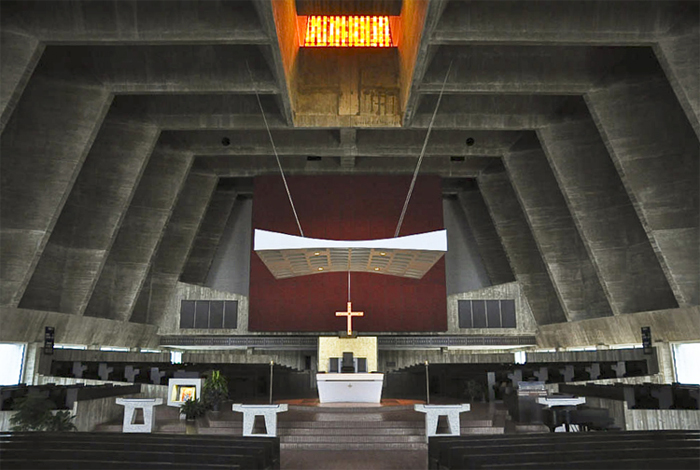The 4th FIUV Position Paper, entitled The Manner of Receiving Communion , has been published (I read it at RORATE CAELI). The paper is very well done and thought provoking; please, take the time.
The Position Paper speaks of the value of receiving a. kneeling and b. on the tongue. This morning I was watching on TV the distribution of Holy Communion at the Papal Mass on Palm Sunday. While people have always vied to receive Holy Communion from the Holy Father and are presumably especially well disposed at that moment, TV seems to communicate the difference in the two practices presently used in the Church and speaks at least to me of the wisdom of encouraging our people to choose to return to the tradition of centuries past. (As an aside, I think the portable kneeler used at Papal Masses for Communion, just like the "communion stands" which made a brief appearance at the beginning of the liturgical changes, are not to be considered improvements on the Communion Rail, with or without the long meters of starched linen veils for the rail which the dear nuns so devotedly prepared and we altar-boys so loved to flip back and forth before and after Communion. You can see three of the stands I am referring to in this picture of the Abbey Church at St. John's Collegeville. I think people came up to them two by two.
The return of or to the rail is not the return of or to a barrier. It was always understood as an extension of the Altar of Sacrifice itself and rightly so. By encouraging people to come to the Communion Rail to receive (a. kneeling, if health and joints permit) we offer them more time to focus on the Lord there before them. It slows to a full stop for the actual moment of receiving Holy Communion a communion procession which can be very hectic. Please tag this as a gain for RECOLLECTION or a RECOLLECTIVE SPIRIT on behalf of the one who is receiving. The alternative, as I have already mentioned, which I have experienced here in Ukraine, is that people in pewless spaces continue to kneel where they were for the Eucharistic Prayer and the priest comes around the church distributing to them as they indicate, from their place kneeling, their wish to receive the Lord in Holy Communion.
Many people sort of bluster or scoff when it is affirmed that Communion (b.) on the tongue is a more reverent way to receive. The Position Paper rightly betones the nexus between faith and reverence. The more profound our faith in the One here Present, the deeper our reverence. Aesthetics are not the decisive criteria for reverence and the priest's edification at the posture and grace of the person before him receiving communion in the hand as opposed to a tongue, which rarely attracts, must not and cannot be factored in. REVERENCE arises better from the practice of Communion on the tongue simply by reason of the issue of particles, which are though tiny still big enough to be recognized for what they are, namely, the Body of the Lord as Bread broken for our salvation. To the extent we can get people to worry about particles of the Consecrated Host, we can also give them pause to think about the body, the heart, the soul which receives the Lord. Renewal of the Sacrament of Penance goes hand in hand with gains in reverence and recollection and vice versa.
How do you bring a parish back to the rail? I suppose you have to preach about it. I suppose you start with daily Mass folk. Communion here in Ukraine is usually by intinction as it was in the Cathedral in Castries, St. Lucia. I have the impression that people generally appreciate this manner of receiving as (in the Reformation milieu of the Caribbean) it was a dignified way of granting Communion to the folk under both Species. Here it conforms best to the Byzantine practice which predominates in Ukraine, whether Catholic or Orthodox.
Increasing our longing for and raising our consciousness of the Lord Who comes into our hearts, in any case, is bound not only to melt the frozen and warm the chill, bringing hearts back to Him, but it may even knock one or another down like a certain apostle on the road to Damascus. My more profound awareness of Whom it is that I serve is certainly part of being that glorious city on the mountain top, of being the lamp on the lamp-stand, of being salt and light for our world.
PROPERANTES ADVENTUM DIEI DEI

No comments:
Post a Comment
Note: Only a member of this blog may post a comment.